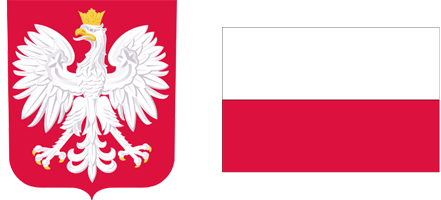ORIGINAL ARTICLE
Pollen-based vegetation and climate
reconstruction of the Ferdynandovian sequence
from Łuków (eastern Poland)
1
Maria Curie-Skłodowska University, Faculty of Earth Sciences and Spatial Management,
Kraśnicka 2 c/d, 20-718 Lublin, Poland
Online publication date: 2013-06-26
Publication date: 2013-06-26
Acta Palaeobotanica 2013; 53(1): 115-138
KEYWORDS
ABSTRACT
Early middle Pleistocene deposits from Łuków, correlated with the Cromerian complex, represent
rare bi-partite Ferdynandovian pollen sequence encompassing two interglacial warmings (F1 and F2) separated
by F1/2 cooling/glaciation and related to MIS 15–13. The paper presents pollen-based palaeoecological and palaeoclimate
investigations in which plant climate indicators were applied. Additionally modern pollen dataset
from the Roztocze region was used to evaluate vegetation history in terms of forest communities and presence
and abundance of tree taxa sensitive to air temperature and humidity. Climate changes derived from pollen
data indicate strong oceanic features of the climate of the fi rst interglacial (F1) resembling those typical for the
beginning of the Eemian, followed by cooling (F 1/2) with plant communities typical of the Pleistocene steppetundra,
which undoubtedly indicate strong continentality, and subsequent return of more oceanic climate (F2)
with mean remperature of the warmest month exceeding 18°C. Both pollen succession and climate changes
recorded in the Łuków sediments correlate well with other bi-partite successions known from eastern part of
European Lowlands.
CITATIONS (9):
1.
Dagmar Cave (Czech Republic, Moravian Karst), a unique palaeontological site of the Cromerian Interglacial
Rudolf Musil, Ondřej Děkanovský, Martin Ivanov, Nela Doláková, Jan Mrázek, Lucie Juřičková, Joyce Lundberg
Quaternary International
Rudolf Musil, Ondřej Děkanovský, Martin Ivanov, Nela Doláková, Jan Mrázek, Lucie Juřičková, Joyce Lundberg
Quaternary International
2.
Neoholocene palaeoenvironmental changes in the Southern Roztocze region (SE Poland): The Kobyle Jezioro raised bog case study
Katarzyna Korzeń, Włodzimierz Margielewski, Dorota Nalepka
Quaternary International
Katarzyna Korzeń, Włodzimierz Margielewski, Dorota Nalepka
Quaternary International
3.
Development of modern forest zones in the Beskid Niski Mts. and adjacent area (Western Carpathians) in the late Holocene: A palaeobotanical perspective
Agnieszka Wacnik, Dorota Nalepka, Wojciech Granoszewski, Adam Walanus, Ewa Madeyska, Katarzyna Cywa, Kazimierz Szczepanek, Elżbieta Cieślak
Quaternary International
Agnieszka Wacnik, Dorota Nalepka, Wojciech Granoszewski, Adam Walanus, Ewa Madeyska, Katarzyna Cywa, Kazimierz Szczepanek, Elżbieta Cieślak
Quaternary International
4.
Holocene development of two calcareous spring fens at the Carpathian-Pannonian interface controlled by climate and human impact
Eva Jamrichová, Andrea Gálová, Adam Gašpar, Michal Horsák, Jitka Frodlová, Michal Hájek, Mária Hajnalová, Petra Hájková
Folia Geobotanica
Eva Jamrichová, Andrea Gálová, Adam Gašpar, Michal Horsák, Jitka Frodlová, Michal Hájek, Mária Hajnalová, Petra Hájková
Folia Geobotanica
5.
Pleistocene freshwater environments of Poland: a comprehensive study of fish assemblages based on a multi‐proxy approach
Krzysztof Stefaniak, Oleksandr Kovalchuk, Jan Kotusz, Renata Stachowicz‐Rybka, Joanna Mirosław‐Grabowska, Hanna Winter, Monika Niska, Artur Sobczyk, Zoltán Barkaszi, Adam Kotowski, Małgorzata Malkiewicz, Witold Alexandrowicz, Paweł Raczyński, Janusz Badura, Bogusław Przybylski, Dariusz Ciszek, Krzysztof Urbański
Boreas
Krzysztof Stefaniak, Oleksandr Kovalchuk, Jan Kotusz, Renata Stachowicz‐Rybka, Joanna Mirosław‐Grabowska, Hanna Winter, Monika Niska, Artur Sobczyk, Zoltán Barkaszi, Adam Kotowski, Małgorzata Malkiewicz, Witold Alexandrowicz, Paweł Raczyński, Janusz Badura, Bogusław Przybylski, Dariusz Ciszek, Krzysztof Urbański
Boreas
6.
Frontiers of the Lower Palaeolithic expansion in Europe: Tunel Wielki Cave (Poland)
Małgorzata Kot, Claudio Berto, Maciej Krajcarz, Hoyo Moskal-del, Natalia Gryczewska, Marcin Szymanek, Adrian Marciszak, Krzysztof Stefaniak, Katarzyna Zarzecka-Szubińska, Grzegorz Lipecki, Krzysztof Wertz, Teresa Madeyska
Scientific Reports
Małgorzata Kot, Claudio Berto, Maciej Krajcarz, Hoyo Moskal-del, Natalia Gryczewska, Marcin Szymanek, Adrian Marciszak, Krzysztof Stefaniak, Katarzyna Zarzecka-Szubińska, Grzegorz Lipecki, Krzysztof Wertz, Teresa Madeyska
Scientific Reports
7.
Late Middle Pleistocene Palynostratigraphy and Landscape Evolution in Western and Central Europe: Will the Real Holsteinian Please Stand Up?
Filip Van Beirendonck, Cyriel Verbruggen
Filip Van Beirendonck, Cyriel Verbruggen
8.
Insight into the vegetation development of the Karkonosze Mountains (southwestern Poland) during the Late Vistulian and Holocene, based on data from glacial lakes
Agnieszka Wacnik, Ewa Madeyska
Acta Palaeobotanica
Agnieszka Wacnik, Ewa Madeyska
Acta Palaeobotanica
9.
Late Middle Pleistocene palynostratigraphy and landscape evolution in Western and Central Europe: Will the real Holsteinian Please Stand Up?
Filip Van Beirendonck, Cyriel Verbruggen
Review of Palaeobotany and Palynology
Filip Van Beirendonck, Cyriel Verbruggen
Review of Palaeobotany and Palynology
We process personal data collected when visiting the website. The function of obtaining information about users and their behavior is carried out by voluntarily entered information in forms and saving cookies in end devices. Data, including cookies, are used to provide services, improve the user experience and to analyze the traffic in accordance with the Privacy policy. Data are also collected and processed by Google Analytics tool (more).
You can change cookies settings in your browser. Restricted use of cookies in the browser configuration may affect some functionalities of the website.
You can change cookies settings in your browser. Restricted use of cookies in the browser configuration may affect some functionalities of the website.


